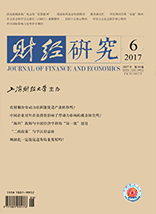Previous research explains the puzzle of high savings rate in China mainly based on competitive savings motive with sex ration imbalance. This paper considers the natural event of children marriage as a treatment variable, identifies the "marriage effect" by comparing differences in savings between families with married son and families with unmarried son, and provides competitive savings motive theory and the puzzle of high savings rates in Chinese families with micro basic evidence. The empirical results show that after controlling individual and family characteristics, savings rates of families with unmarried son are significantly higher compared with families with married son. After considering problems of regional differences, educational savings motive, precautionary savings motive and sample selection, the result that savings rates of families with unmarried son are significantly higher compared with families with married son still remain robust. Further studies identify rural-urban heterogeneous marriage effect and changes in consumption structure of families with married son. It finds that the marriage effect has influences on savings rates of families with different income levels, and is a more primary factor suppressing consumption in low-income families. Results revealed in this paper enrich the competitive savings motive theory in marriage market.
 / Journals / Journal of Finance and Economics
/ Journals / Journal of Finance and EconomicsJournal of Finance and Economics
LiuYuanchun, Editor-in-Chief
ZhengChunrong, Vice Executive Editor-in-Chief
YaoLan BaoXiaohua HuangJun, Vice Editor-in-Chief
Save for Marriage? Empirical Evidence from CFPS Data
Journal of Finance and Economics Vol. 43, Issue 06, pp. 17 - 27 (2017) DOI:10.16538/j.cnki.jfe.2017.06.002
Abstract
References
Abstract
Cite this article
Yu Litian, Lian Hongquan. Save for Marriage? Empirical Evidence from CFPS Data[J]. Journal of Finance and Economics, 2017, 43(6): 17–27.
Export Citations as:
For




 8352
8352  6229
6229

